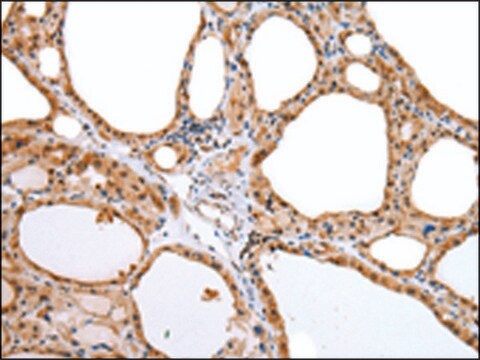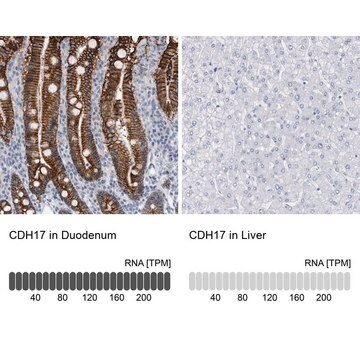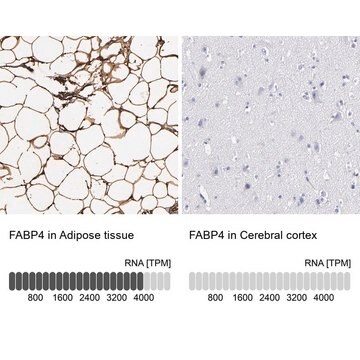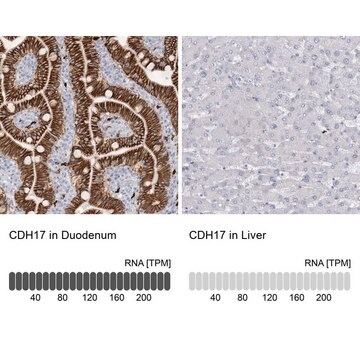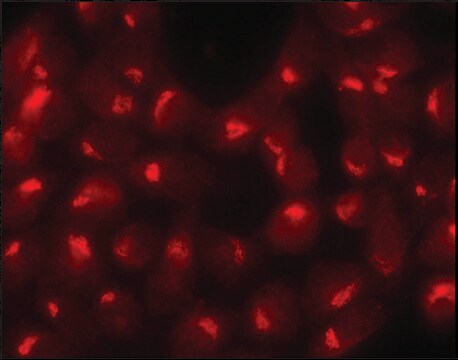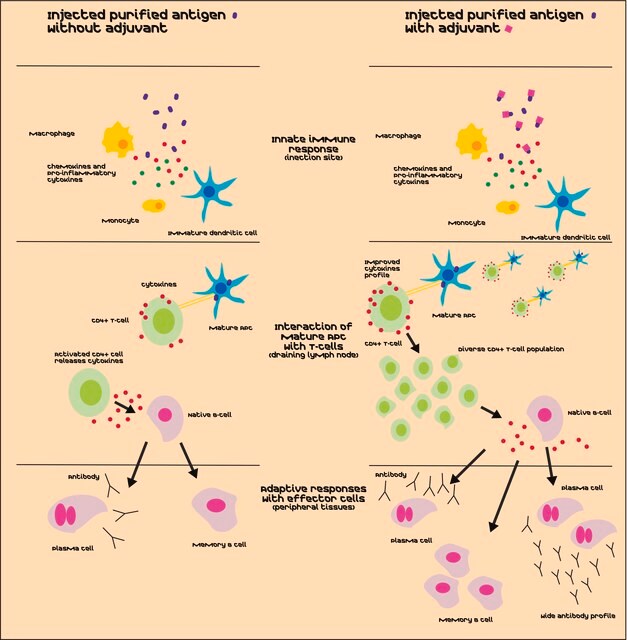ABS1677
Anti-V-ATPase subunit d 2
from rabbit
Sinónimos:
V-type proton ATPase subunit d 2, Osteoclast-specific vacuolar ATP synthase, V-ATPase subunit d 2, Vacuolar proton pump subunit d 2
About This Item
Productos recomendados
biological source
rabbit
Quality Level
antibody form
unpurified
antibody product type
primary antibodies
clone
polyclonal
species reactivity
mouse
species reactivity (predicted by homology)
nonhuman primates (based on 100% sequence homology), rat (based on 100% sequence homology), human (based on 100% sequence homology)
technique(s)
western blot: suitable
NCBI accession no.
UniProt accession no.
shipped in
ambient
target post-translational modification
unmodified
Gene Information
mouse ... Atp6V0D2(242341)
General description
Specificity
Immunogen
Application
Signaling
Western Blotting Analysis: A representative lot detected less V-ATPase subunit d 2 expression in osteoclasts differentiated in culture from GSK3 -S9A Tg mouse bone marrow monocyte precursors (BMMs) due to a downregulated NFATc1 expression caused by osteoclast-specific GSK3 -S9A mutant expression (Jang, H.D., et a1. (2011). J. Biol. Chem. 286(45):39043-39050).
Western Blotting Analysis: A representative lot detected V-ATPase subunit d 2 in osteoclasts, but not bone marrow monocyte precursors (BMMs), from wild-type mice, nor in osteoclasts from Atp6v0d2-knock mice (Lee, S.H., et al. (2006). Nat. Med. 12(12):1403-1409).
Quality
Western Blotting Analysis: A 1:2,000 dilution of this antibody detected V-ATPase subunit d 2 in mouse osteoclast lysate.
Target description
Physical form
Storage and Stability
Handling Recommendations: Upon receipt and prior to removing the cap, centrifuge the vial and gently mix the solution. Aliquot into microcentrifuge tubes and store at -20°C. Avoid repeated freeze/thaw cycles, which may damage IgG and affect product performance.
Other Notes
Disclaimer
Not finding the right product?
Try our Herramienta de selección de productos.
Storage Class
12 - Non Combustible Liquids
wgk_germany
WGK 1
flash_point_f
Not applicable
flash_point_c
Not applicable
Certificados de análisis (COA)
Busque Certificados de análisis (COA) introduciendo el número de lote del producto. Los números de lote se encuentran en la etiqueta del producto después de las palabras «Lot» o «Batch»
¿Ya tiene este producto?
Encuentre la documentación para los productos que ha comprado recientemente en la Biblioteca de documentos.
Nuestro equipo de científicos tiene experiencia en todas las áreas de investigación: Ciencias de la vida, Ciencia de los materiales, Síntesis química, Cromatografía, Analítica y muchas otras.
Póngase en contacto con el Servicio técnico